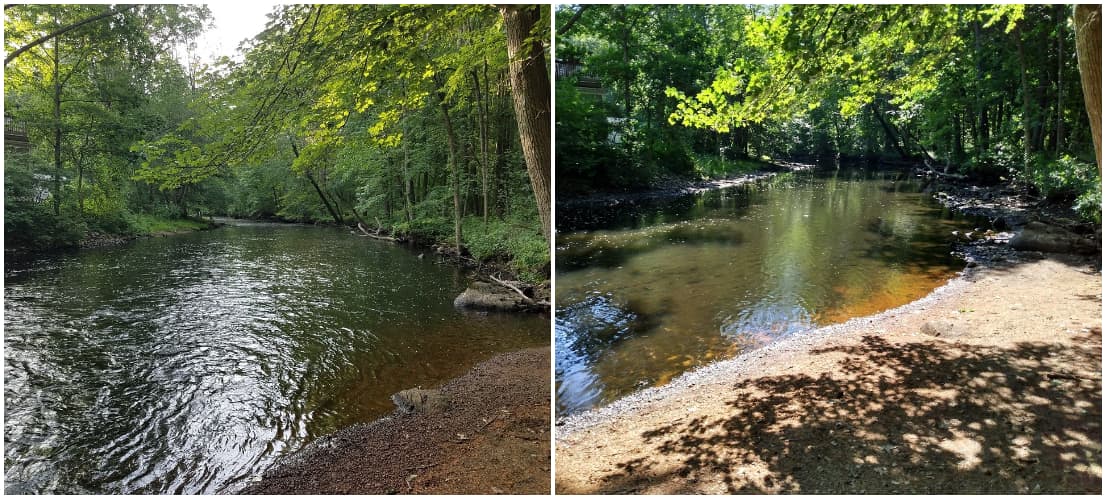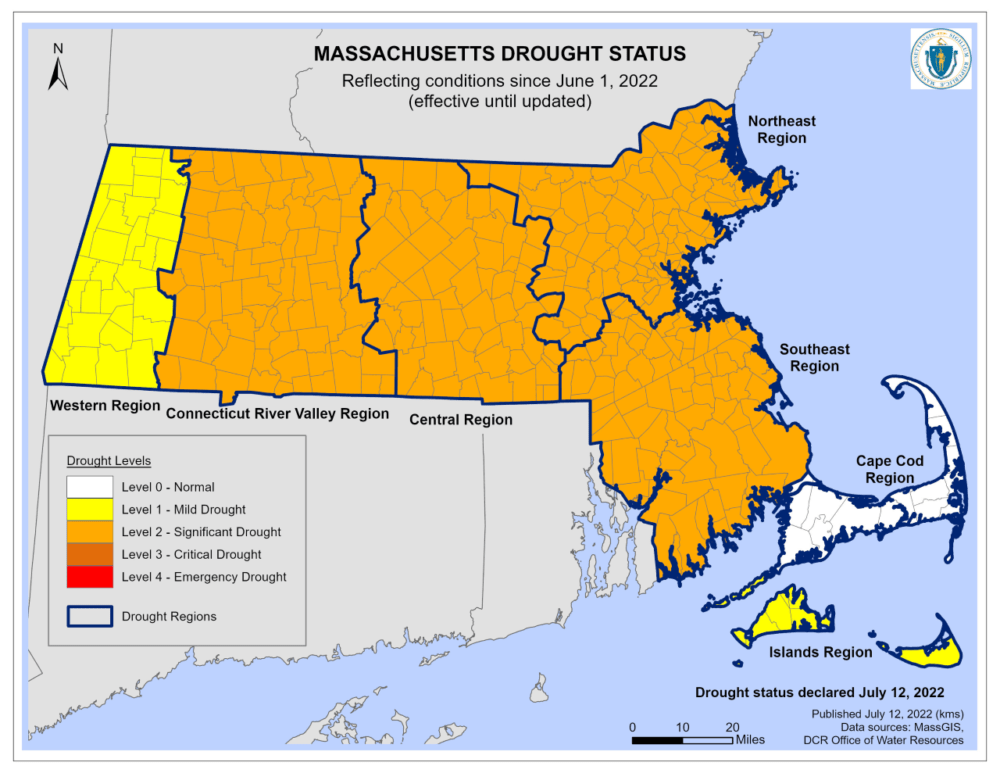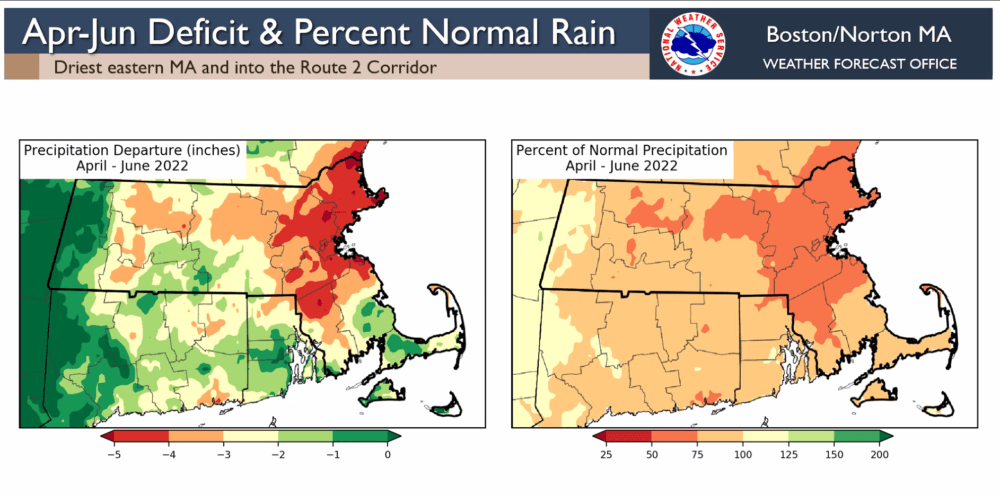Advertisement
The drought in Massachusetts is getting worse

The ongoing drought in Massachusetts is getting worse. Driven primarily by a lack of rain, approximately 90% of the state is now experiencing some level of drought, according to the Executive Office of Energy and Environmental Affairs.
The state measures drought severity on a scale of 0-4, with 0 being "normal" and 4 being an "emergency." The state is divided into seven regions, and each is assigned a level based on criteria like precipitation, ground water levels, stream flow and wildfire risk.
Since the last update in June, the drought in several regions has become more acute. As of Tuesday evening, which is when the latest update came out, four regions are currently in a "Level 2 significant" drought: The northeast, the southeast, central and Connecticut River Valley. The islands and western region are in a "Level 1 mild drought," and only the Cape is considered normal.

It's not necessarily abnormal for New England to experience several months of drought — there were statewide droughts in 2021 and 2020. But while relatively short in duration, these droughts still "can have profound impacts on a local region, resulting in shortages in public water supplies and very low streamflows," according to the federal drought monitoring agency.
The new drought declaration came a day after the state's Drought Management Task Force met to discuss conditions on the ground. The task force includes state and federal scientists, as well as representatives from several industry, water management and environmental groups.
“In general, what we’re seeing is that the drying conditions have extended further west, and it’s starting to impact the central and Connecticut River Valley regions as well,” said Vandana Rao, director of water policy in the state and chair of the drought task force, at the meeting. “We’re not seeing anything for this month of July to really indicate any improvement.”
Nicole Belk, a meteorologist from the National Weather Service, said during the meeting that while there is a small amount of precipitation expected in the next 10 days, it’s unlikely to make a dent in the drought.
“For much of the state, we’re looking at considerably below-normal levels of precipitation — anywhere from 50-75% of normal,” she said, adding that some parts of eastern Massachusetts got 4-5 inches less rain than normal between April and June.
Advertisement

Below average rainfall is the main cause of a drought, but it’s not the only metric the state uses to determine whether a region belongs in a given level. To determine that, the task force also asks whether streams and rivers are running lower than normal or even dry; groundwater levels at several wells around the region are lower than normal; lakes and reservoirs are low; the wildfire risk is higher than normal; and whether something called the "evaporative demand drought index" is above normal — the EDDI is a measure of how “how thirsty” the atmosphere is and how quickly water evaporates.
Most importantly, several members of the task force said that the effects of the drought are being felt throughout the state. Streams around the state are running low, which poses a risk for aquatic wildlife and could lead to toxic algae blooms. Farmers in the Connecticut River Valley are reporting drier than normal soils, while some in the northeast region are already seeing crop failures. And the threat of wildfires continues to grow as grasses and other vegetation dry out.
Dave Celino, the state’s Chief Forest Fire Warden, said that while the number of forest fires is relatively low at the moment, he’s worried that will change as vegetation dries out.
Perhaps one bit of good news to come from the meeting was the news that no drinking water supplies are threatened at the moment.
After hearing testimony from several experts, the task force sent recommendations to the Secretary of Energy and Environmental Affairs that the three most western regions all be leveled up.
EEA Secretary Bethany Card agreed with the suggestions.
In a statement released Tuesday night, Card implored residents to “implement water conservation practices to reduce stress on our local water supply systems and our natural habitats."
The state has released the following water use recommendations for residents and businesses:
Level 1 drought recommendations
- Limit outdoor watering to 1 day a week, and only water between 5 p.m. and 9 a.m. when less water will be lost to evaporation.
- Consider switching to more efficient toilets, faucets and showers that use less water.
Level 2 drought recommendations
- Limit outdoor watering and only use hand-held hoses or watering cans. Watering should be done between 5 p.m. and 9 a.m. to reduce the amount of water lost to evaporation.
- Minimize all indoor water use.
The state's website has more information on indoor and outdoor water conservation practices.
This article was originally published on July 12, 2022.
